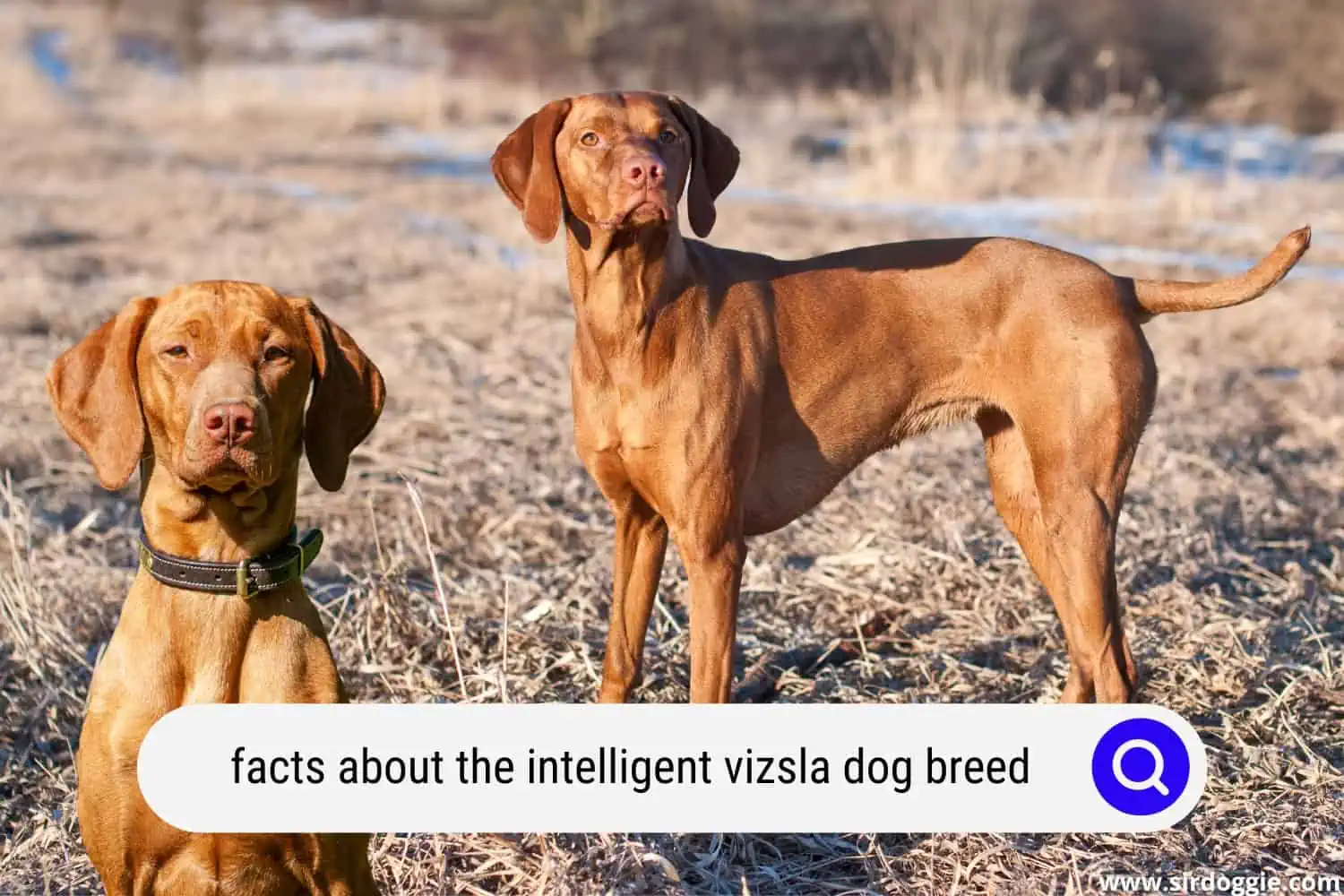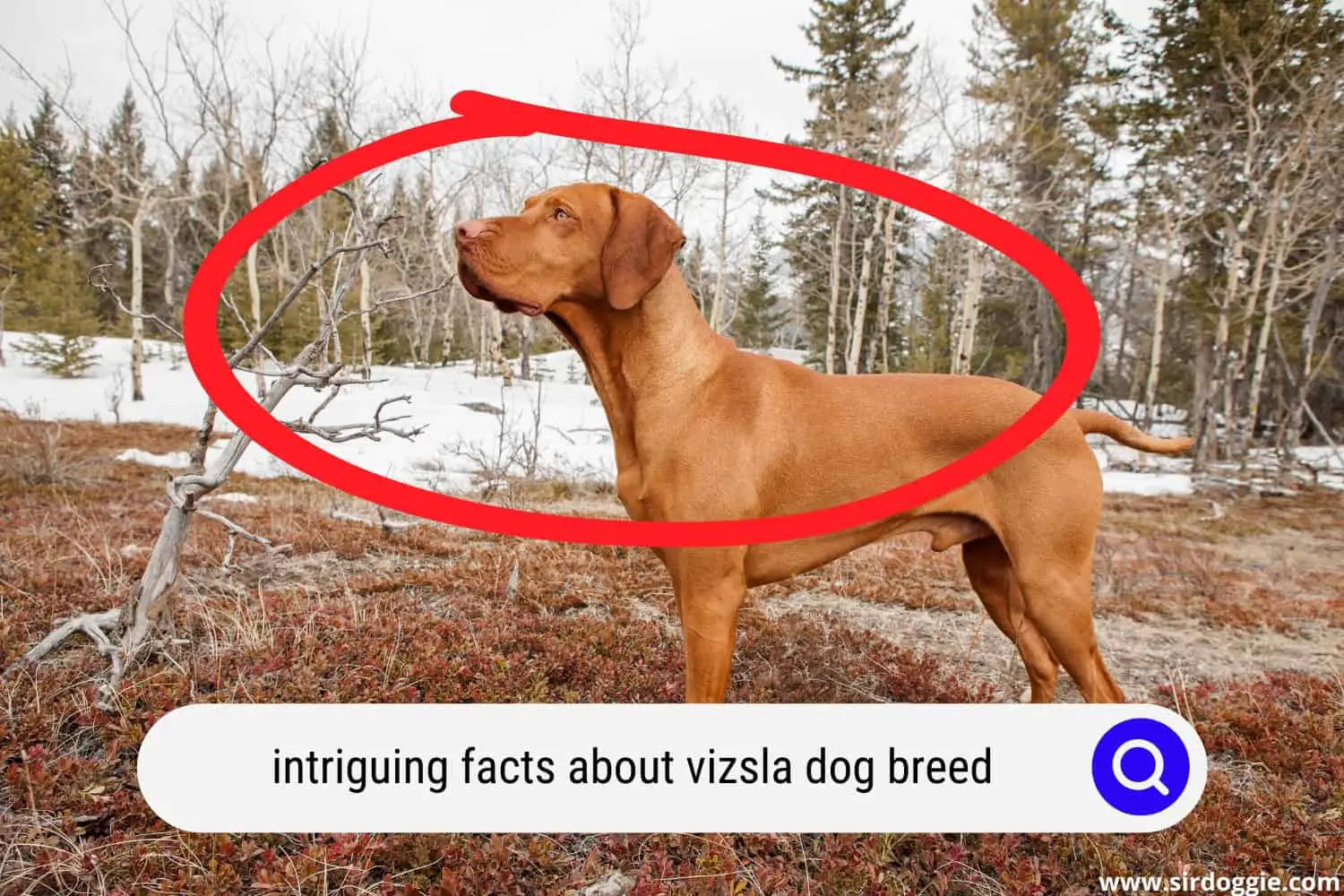Intriguing Facts About the Very Intelligent Vizsla Dog Breed
One of the best known and loved dogs by families worldwide is the Vizsla. It is a breed of dog that has been characterized over the years for its hunting skills. They have been used decade after decade as companions to hunters.

These dogs have an elegant and attractive appearance. They have a muscular and medium-large size body. Its physical condition is due to the fact that it needs to exercise and do other physical activities every day. Vizslas are very active and energetic canines that should not be confined to a house or small spaces because otherwise, they can become destructive.
Furthermore, the Vizslas are very affectionate towards members of their human family and other animals. However, their sensitivity makes them dogs that need to be accompanied by their loved ones most of the time.
Facts About the Intelligent Vizsla Dog Breed
There are interesting facts about this breed that make them amazing in the eyes of many people:
Origin
The first thing to note is that this breed of dog is ancient and originated in Hungary. The ancestors of the Vizsla were hunting dogs that came from the Magyar tribe, which occupied central Europe.
According to some documents dating from the 14th century, these hunting dogs had a very similar appearance and features to the Vizsla that we all know today. It should be noted that they were companion dogs of barons and warlords of Hungary who tried to improve the hunting skills of this breed and keep it pure.
A significant event in history was during the Second World War. During that time, the Vizsla breed was negatively affected, causing it almost to become extinct. Some records affirm that there were only 12 canines of this breed that later managed to recover and reproduce little by little over time.
Personality
One of the most striking aspects of that breed is its personality and temperament. Vizslas are very friendly and affectionate animals with people in general. That includes members of its human family, children, strangers, and even other animals. The personality and behavior of this dog make it ideal to be part of any family.
They are very intelligent and teachable. That means that, as Vizsla owners, we can train them more quickly compared to other dogs. That is largely because they like to entertain themselves and learn new skills every day.
They are also characterized by their need to exercise at least 1 hour each day regardless of whether physical activity or games. These canines simply love being in constant physical movement and hate being confined.
If a person keeps them in the house without the possibility of going outside, they can become destructive because they try to release all the energy that they have kept accumulated. That is why it is essential to keep them outdoors so that they can carry out any type of activity and have fun.
It should be noted that the Vizslas are known as Velcro dogs since they are very attached to the members of their human family, especially their owners. They create a very strong bond with their loved ones and need to be with them most of the time to feel loved. Otherwise, they might think that they are not loved, negatively affecting their health.
Appearance
The physical appearance of these dogs has to do with what we have previously mentioned. Their active and energetic personality makes them athletic canines that need to exercise regularly. That aspect has managed over the years for its body to develop and evolve.
The Vizslas are medium in size and have a long, slim, muscular, and well-proportioned body. Its loin is wide and short while its back is straight and muscular. The skull of this type of dog is broad, and the muzzle is long. As for the tail of this majestic animal, it is straight and long.
The eyes are oval, medium in size, and have a dark color that can be brown or amber, and that matches the color of its coat. Its ears are thin, long, and hanging. An interesting fact is that they are born with light-colored eyes, generally blue, and as they develop, the color becomes darker.
The coat of a Vizsla is short, hard, and bushy and has a beautiful reddish-gold color that matches its eyes. In addition, some may have a small spot on the chest and other ones of the same color on their paws.
As we have said, these canines are medium in size. Generally, male Vizslas are between 22 inches (55.88 cm) to 24 inches (60.96 cm) while females are between 21 inches (53.34 cm) and 23 inches (58.42 cm) in height. In addition, males reach weight in a range between 44 lb (20 kg) and 66 lb (30 kg), and females weigh between 39 lb (18 kg) and 55 lb (25 kg).

Care
They are easy to care for and maintain dogs, especially for their short coat. They do not need constant cleaning since they do not get dirty frequently. Therefore, it is advisable to bathe them only when necessary. Also, since they do not have an undercoat, their owners must ensure that they are not kept outdoors for long periods in cold climates.
The feeding of this dog is also important and must be based on a diet high in nutrients and vitamins and low in fat. Generally, Vizslas can eat meat (chicken, turkey, pork, lamb, veal, and fish), but you, as their owner, must make sure not to fry it or add salt. In addition, vegetables and fruits are also excellent options to add to this beautiful animal’s diet.
Similarly, one of the facts that many people ignore and that we must take into account is the foods that a Vizsla should not eat. Some of them are chocolate, avocado, dairy products, onion, garlic, grapes, caffeine, Xylitol, nuts, etc.

Family Dog Expert Author
Hi there! I’m Stuart, a devoted dog lover and family dog expert with over a decade of experience working with our furry companions. My passion for dogs drives me to share my knowledge and expertise, helping families build strong, loving bonds with their four-legged friends. When I’m not writing for SirDoggie, you’ll find me hiking, playing with my beautiful dog, or studying music.